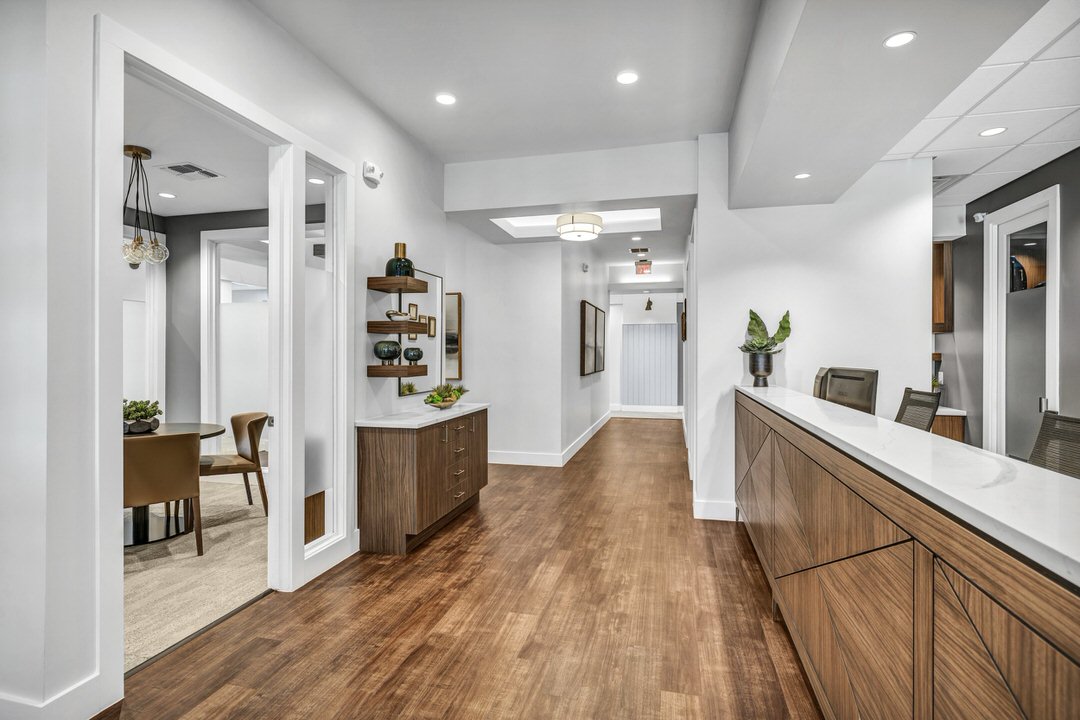

If you’re considering a dental office design project, it’s essential to remember that it’s not just about the physical space. It’s also a vital marketing tool for your practice.
While you and your staff will provide top-notch dental care, the environment of your office will speak volumes to your patients, especially new ones. The quality of your office environment will determine how patients perceive the level of care they receive.
As a new patient to an unfamiliar doctor, you know how nonverbal communication can be powerful in a new or unusual environment. That’s why your office design will speak volumes to your patients, and you have a choice in the statement it makes.
Your perceived competence as viewed by your patients’ perspective is critical to your success. Regardless of your clinical skills, your office design can set you apart and create a positive patient experience.
So, consider investing in a well-thought-out dental office design that will make a positive impact on your patients and your practice.
There are two basic tenets advanced in the above paragraph.
First, accept the concept that the office, among other things, is a communication tool, a giant billboard that all of your patients view each time they are treated. It should be the personification of your “marketing” program. In fact, it is the marketing program.
Second, success is dependent upon your patients’ perceptions.
But what is success? What are your goals for your dental office?
Do you want to increase production and revenue, free up time for other pursuits, focus on a specific area of expertise, reduce your workload by bringing on an associate, or balance patient care with income?
It’s important to define your objectives before embarking on a dental office design project.
These goals will dictate certain design objectives such as the number of operatories.
Often, there exists a significant disparity between what doctors believe they need in order to achieve their goals and what is actually required for them to accomplish these goals.
How do you expect the office to assist in reaching your personal goals? Too many times, when questioned about why this new office project is being undertaken the response has been, “I need more chairs or operatories More operatories are a means to reach your ultimate goal.
You must decide how you want your office to look. It is helpful to view your office from your patient’s perspective. Would you rather have a quaint, comfortable-looking office or a more dramatic presentation that conveys the use of cutting-edge knowledge and technology?
Know your goals because they will undoubtedly impact the manner in which your office is designed.
There are two basic office design criteria that should be foremost in your mind as you begin: office function and office image.
After stating your expectations or goals you will be able to gauge the amount of assistance you will require.
You’ll also be able to gauge the amount of work you will do on your own, the financial commitment you will make to the project, and how much time you are willing to commit to it.
Doctors’ involvement can range from total immersion in the project to completely delegating the design of the office to a staff member, spouse, or more appropriately, the designer or architect.
Delegation is ideal for a doctor who wants to devote minimal time and/or effort to the process. It’s important to keep in mind though, you are the one practicing in the facility for, on average, the next 20 years.
Request that the designer or architect confer directly with you at the following decisive points in the process.
These decisive points of contact include but are not limited to the following: initial consultation, review of schematic designs, review of preliminary design, review of working drawings, review of bid analysis and negotiation, review of contractor’s final “punch list,” and occupancy.
Overall, the design of a dental office should not be taken lightly. It is the face of the practice and should reflect the goals and dreams of the dentist.
By understanding the basic tenets of office design, defining your own personal goals, and communicating those goals effectively to a designer or architect, you can create an office that not only looks great but also functions effectively to help you achieve your objectives.
Copyright 2023 © Tholen Healthcare Environments | Privacy Policy